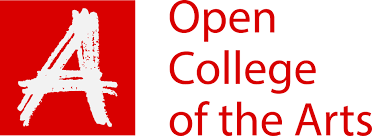When I started on this course in April 2016 the only photographer I had really heard of was David Bailey, not his work only his name. Research links and tutor recommendations started opening up a whole new world of creative artists. Whist researching for my EU Refrendum assignment on the EYV module I came across some ‘Remain’ posters by a photographer called Wolfgang Tillmans. I wrote up the piece on my blog and moved on to the next assignment.
I feel pretty stupid now as I realise how ‘big’ Tillmans is, and how contentious he is in the art world. From my point of view just knowing the passion he felt in doing his bit for the ‘Remain’ campaign makes me respect him as a person. Having then watched videos of him and seeing his images, this respect turned in to an enjoyment of looking at his work. Just through that one political stand has biased my judgement on the art that he produces. I doubt this is uncommon but realising it does make ‘critiquing’ work difficult as there will always be an element of ‘the Emperors new clothes’.
The Tillmans exhibition at Tate Modern is self curated and is an art installation in its own right. 14 rooms of carefully thought out image combinations, sizes and hanging heights and techniques make this complex work for the senses. The layout and the fact that image titles are on a single panel in one corner of the room makes you move around the space in your own way rather than linearly.
One thing to note is that this work is from the last 14 or so years but it is by no means simply a ‘Best Of…’. This is a new exhibit and photographs from different series across that 14 years are mixed and matched. You see an image in one room and then later there will be another similar one which takes your mind back to where you had come from.
Obviously I do not know his intention but I felt that he was showing us that the world is made up of big and small moments, all important and at the same time unimportant, where each of these moments makes us the people we are. The techniques he used that enhanced this feeling were the varying formal and informal hanging and fixing techniques. Some in frames and behind acrylic boxes. Others were hung by pins and bulldog clips with prints curling up at the edges and starting to gather dust on their bottom lip.
Although he engages with politics the work isn’t preachy. The range of genres and styles is mind blowing – portraits, still life, landscape, collage, process, the list goes on. He obviously enjoys photography and is loyal to it as an art form and shares his passion with insights of printing mechanics and materiality of the photographic form.
I enjoyed the use of colour palette in decision making for the resulting hanging combinations and within individual images. Although I have yet to appreciate portraits as a genre I found Tillmans to be sympathetic and tender with his subjects.
The most challenging to appreciate are the workshop scenes although the intention is showing his workspace. Maybe I just don’t want to see where the magic happens. I was also worried by the large white blank canvas that he called ‘In a cloud’ from 2016. I’d like to think he was mocking himself and the art world rather than the viewer.
 The image that I would happily hang on my wall is ‘Paper drop, Prinzessinnenstrasse (2014)‘. It is modern and clean and combines the photographic (photo paper) with nature (droplet shape). It draws your eye in and provides a dream like feeling.
The image that I would happily hang on my wall is ‘Paper drop, Prinzessinnenstrasse (2014)‘. It is modern and clean and combines the photographic (photo paper) with nature (droplet shape). It draws your eye in and provides a dream like feeling.

If I had to choose a favourite room it would be Room 14, the final room. This room displayed two of my favourite images, Transient 2 (2015), and The State We’re In (2015). The former as it was used as the background for one of the ‘Remain’ posters which I became fond of….

…and ‘The State We’re In’ as he uses a seascape to convey an observation of the world and the political landscape. Maybe a little obvious but shows that combining a concept and image can communicate feelings visually.
The exhibition wasn’t just photographic media. Tillmans included a sound room and a video room with a movie of him dancing in his pants. I didn’t spend much time on these but they added another dimension for a modern art exhibition. Tate Modern being an ideal host for Wolfgang Tilmans. Another media format used were desks and tables displaying news articles from newspapers and online. The ‘Remain’ posters and t-shirt designs were displayed on such tables (see featured post image).
As this was a study visit there was a student discussion where the thoughts of other students were discussed. There were some interesting observations particularly around the ‘fly and lobster’ image which wasn’t admired by the majority. However, one student observed that the image was placed in a room where travelling was the central theme. Her view was that maybe it was bringing third world lifestyle and availability of different food to our attention. This was interesting because it highlighted how the setting (context) in this particular room allowed the image to be read differently than when read in isolation.
The student consensus appeared to be that although not everyone liked his work, Tillmans did show that he cares about the world and society, and was concerned about what is happening now.

